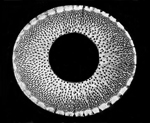|
1959: William P. Malm Quoting Tanabe Hisao Who Quoted Nakatsuka Chikuzen!
- What to Say About That Apparently Somehow Controversial "Idea"
that Early Kyōto Myōan Temple 'Komusō' Were "Christians in Disguise",
Catholic Converts Hiding from the Sects Inquisition Bureau After 1640?
キリシタン教 - 虚無僧 - 明暗寺
KIRISHITAN-KYŌ - KOMUSŌ - MYŌAN-JI
Renowned US musicology professor William P. Malm, 1928-2024, was the first Westerner who,
in 1959, published a now memorable book that attempted to describe all the different genres
of traditional Japanese music in English, to Western readers.
That included a chapter on the 'Shakuhachi' and the Edo Period 'Komusō'.
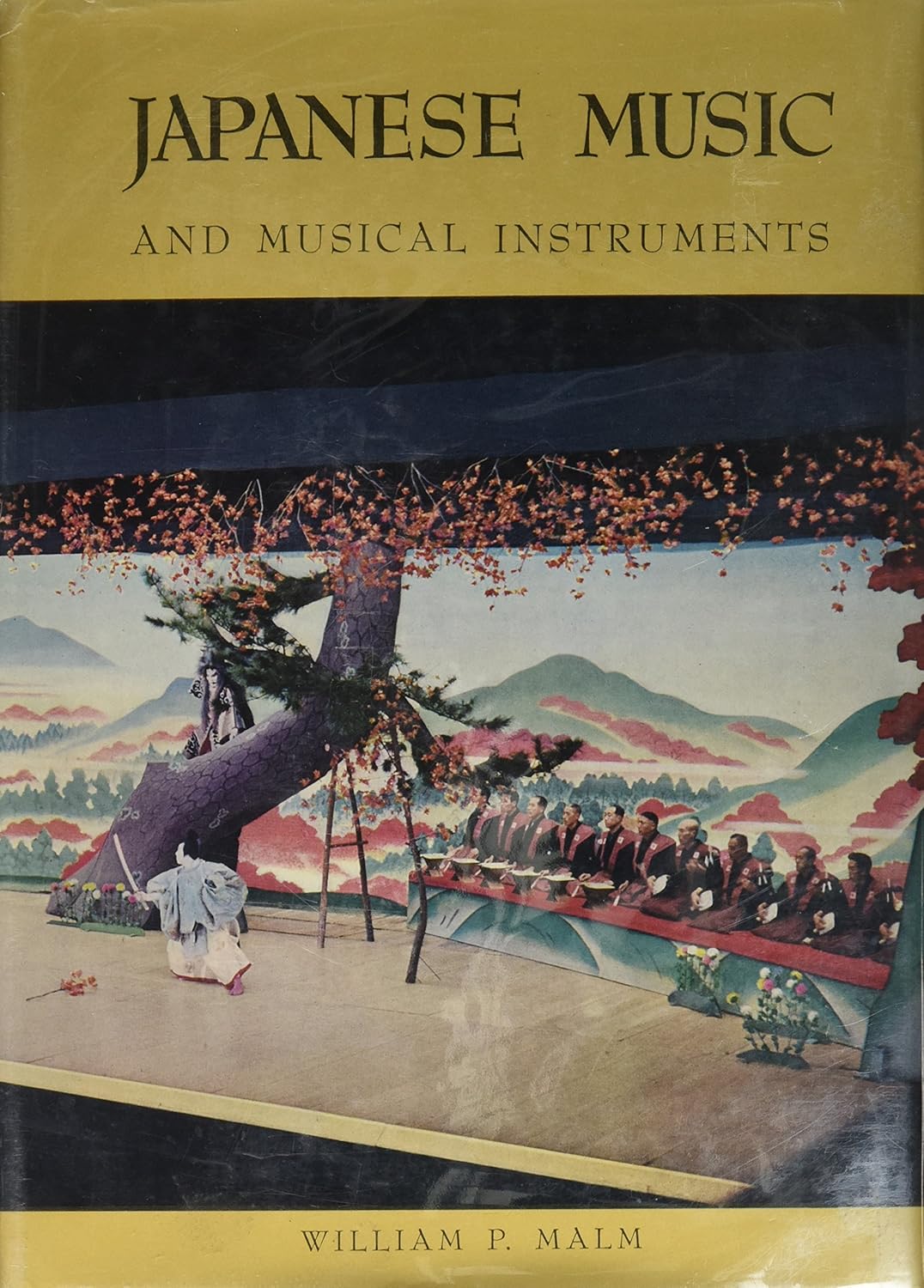
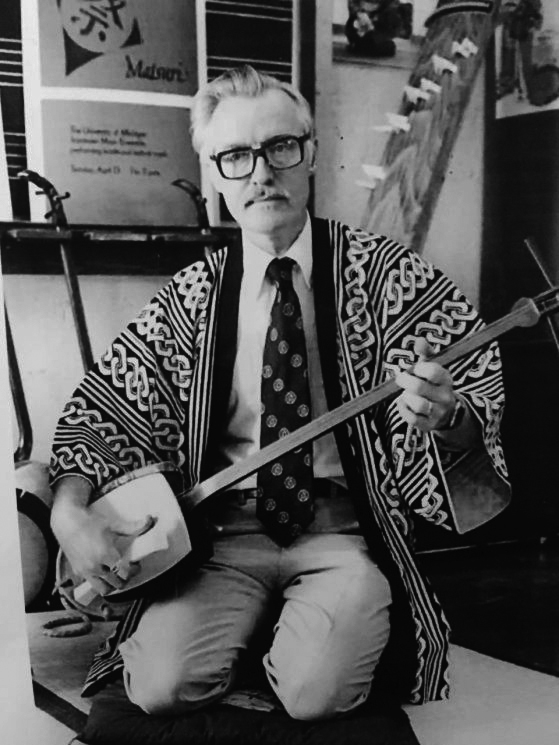
William P. Malm and his 1959 book. Source of portrait:
https://ii.umich.edu/cjs/news-events/news/search-news/professor-william-p--malm-to-receive-the-order-of-the-rising-sun.html
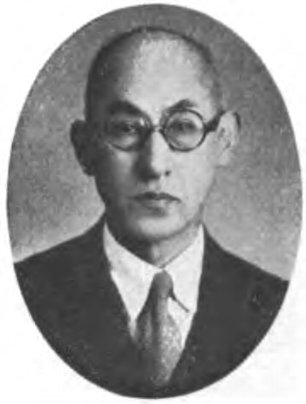
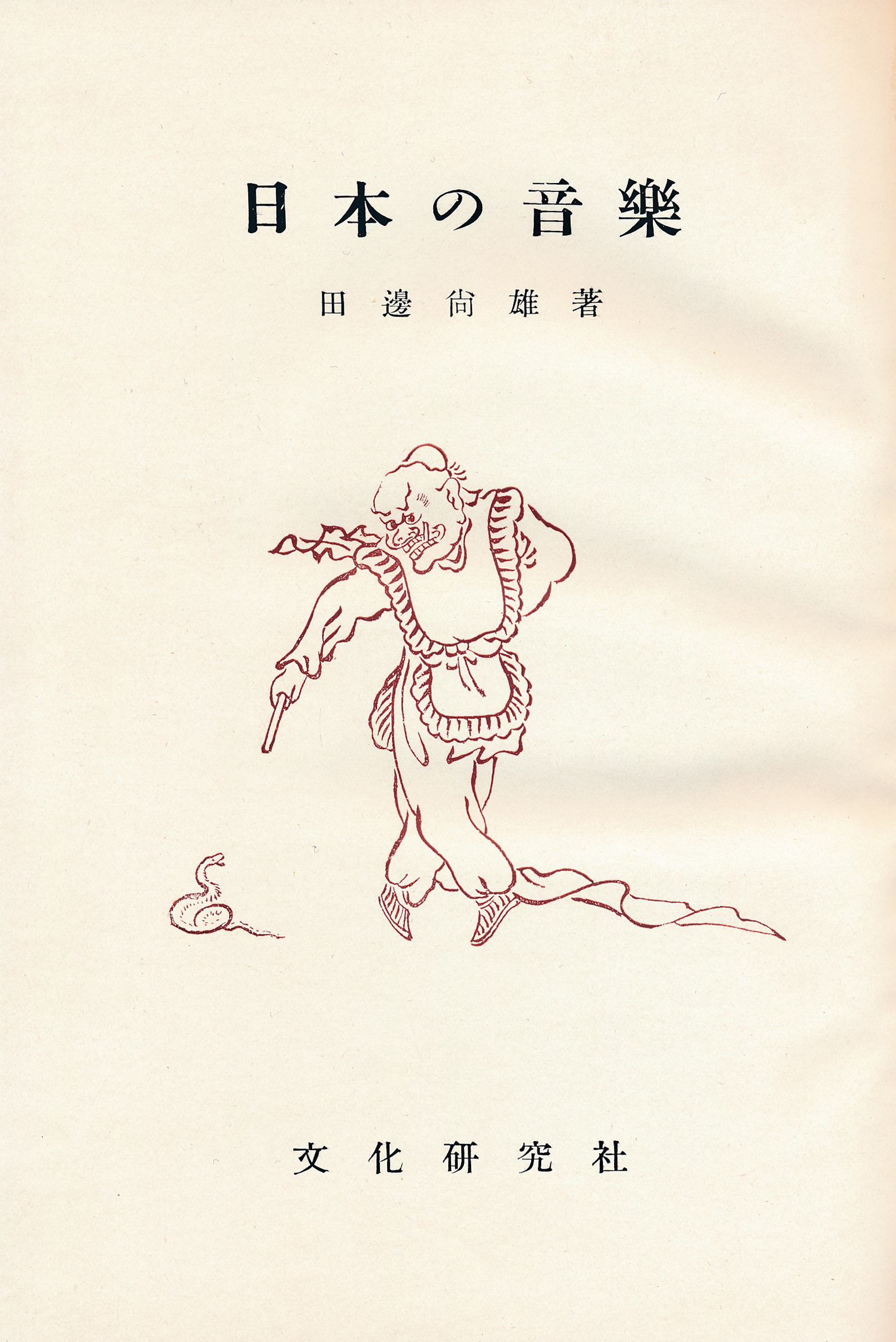
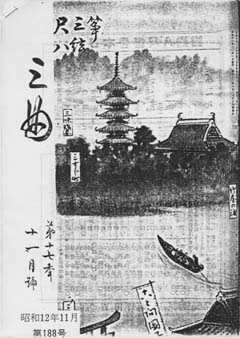

L: Tanabe Hisao, 'the' most reputed early Japan musicologist, ever.
CL: Tanabe Hisao's remarkable book 'Nihon no ongaku', 1954 (1947).
CR: Front cover of 'Sankyoku' music magazine #188, November, 1937.
R: Nakatsuka Chikuzen, highly respectable Japanese pre-WW2
shakuhachi history researcher and Kinko-ryū shakuhachi player.
So, quoting from that book's pages 153 and 154:
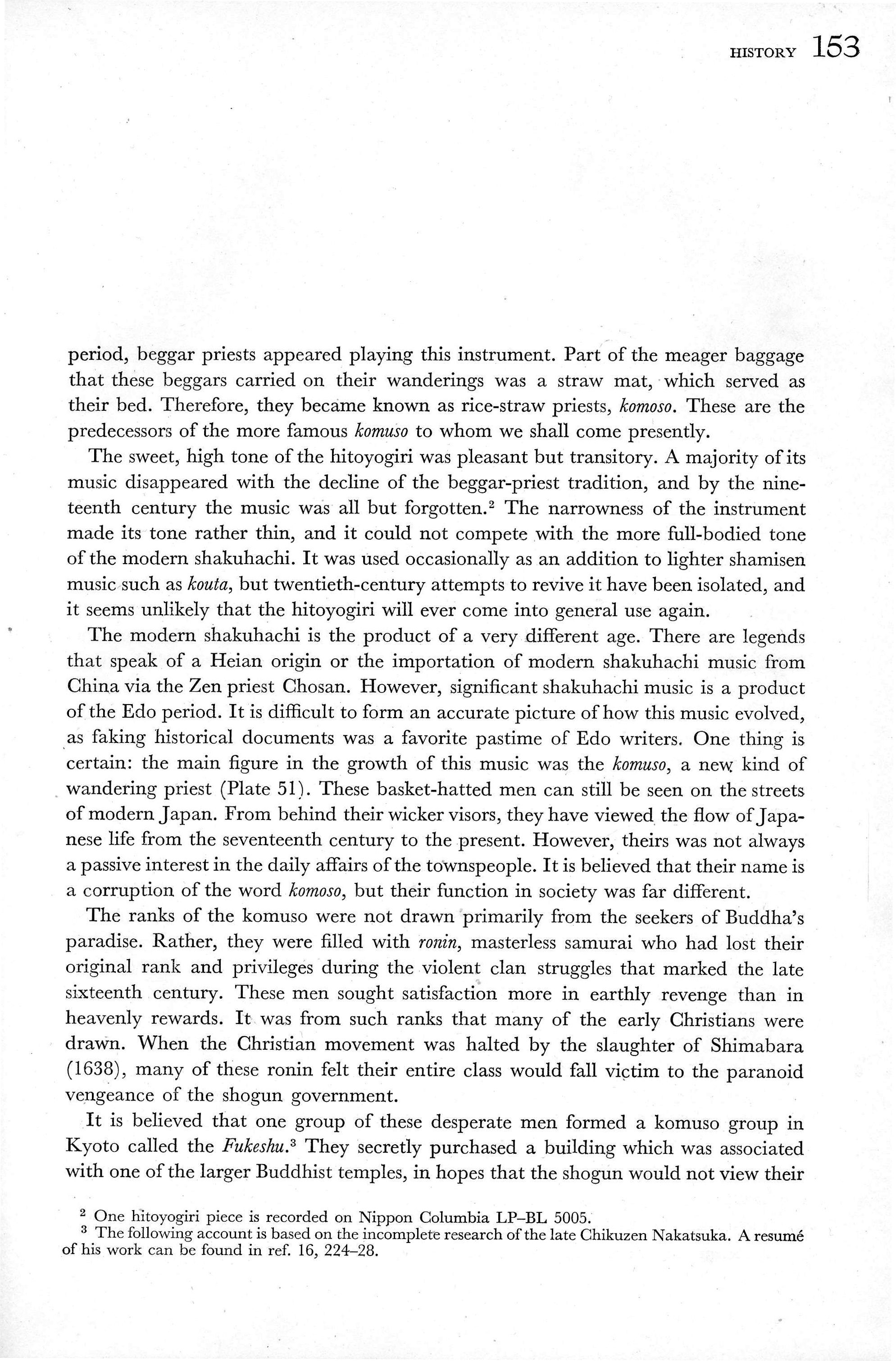

William P. Malm, 1959, pages 153 & 154.
Selected passage:
"It is believed that one group of these desperate men [masterless samurai/rōnin, ed.] formed a komuso group in Kyoto
called the Fukeshu {[* note 3].
They secretly purchased a building which was associated with one of the larger Buddhist temples, in hopes that the shogun
would not view their group as a Christian revival.
This headquarters they named the Meian Temple."
Then, let's take a close look at note 3 on page 153, bottom, that reads:
* Note 3:
"The following account is based on the incomplete research of the late Chikuzen Nakatsuka.
A resumé of his work can be found in ref. 16, 224-28."
"Ref. 16" (Malm p. 282) points to this specific Japanese language source of information:
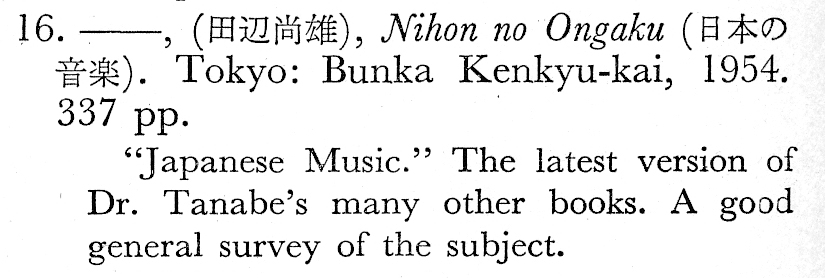
By the way, before proceeding further: Re prof. Malm's 1959 comment that Nakatsuka Chikuzen's research was "incomplete"?
The fact is: No 'Shakuhachi' history research effort and contribution will ever be "complete", period!
That statement about "incompleteness" has even been repeated in public, pretty uncritically, by both Swedish Gunnar Linder and US American Dean Delbene.
To tell the truth: When, in 1979, Nakatsuka's 1936-1939 articles in the Japanese music magazine 'Sankyoku',
the result was a more than 600 pages, impressive publication.
Tanabe Hisao: Nihon no ongaku.
Bunka Kenkyūsha, 2nd impression, 1954.
Tanabe Hisao, Nihon no ongaku, 1954, pages 224-228:
Here you have all those five pages scanned for public display and investigation:
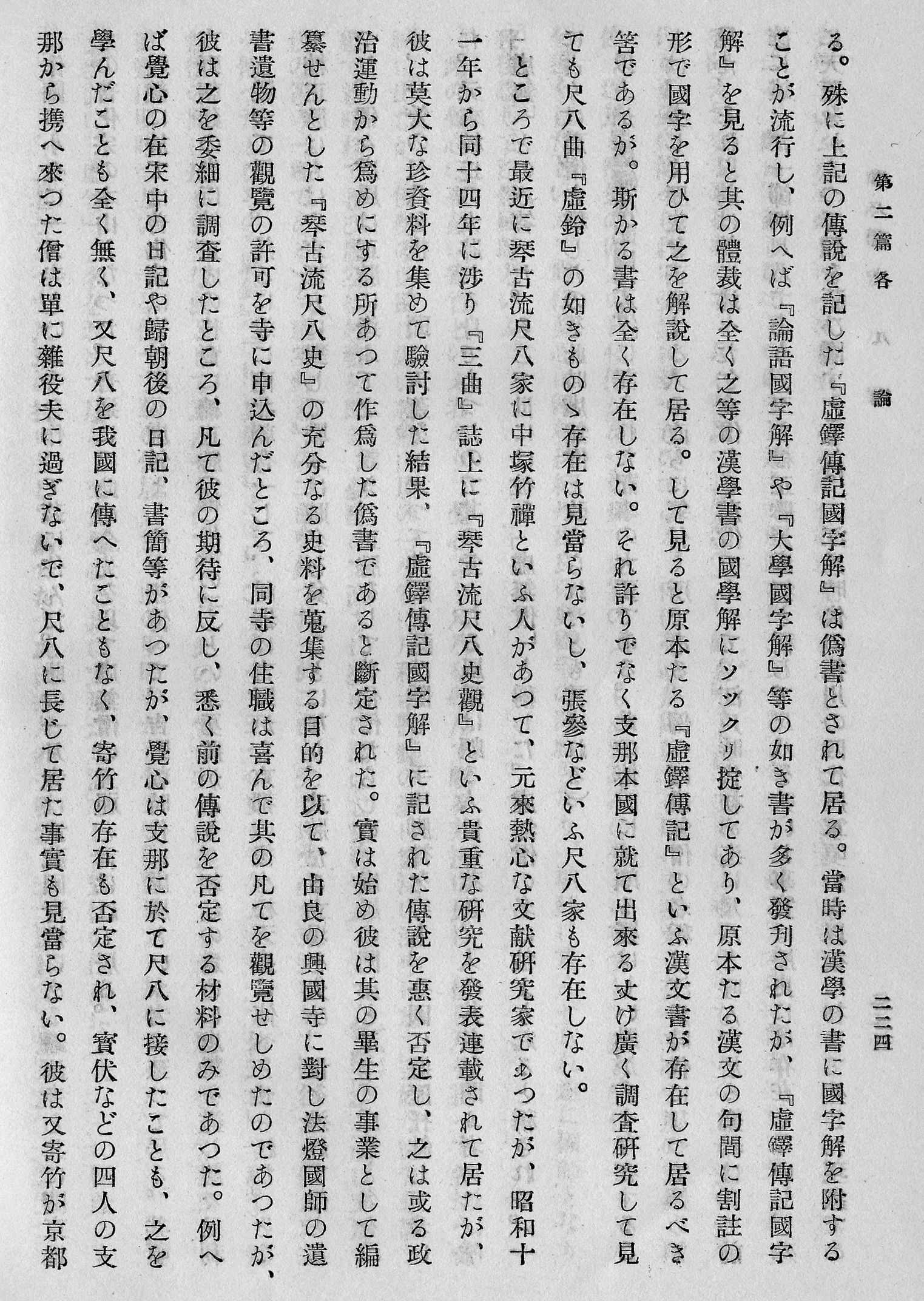
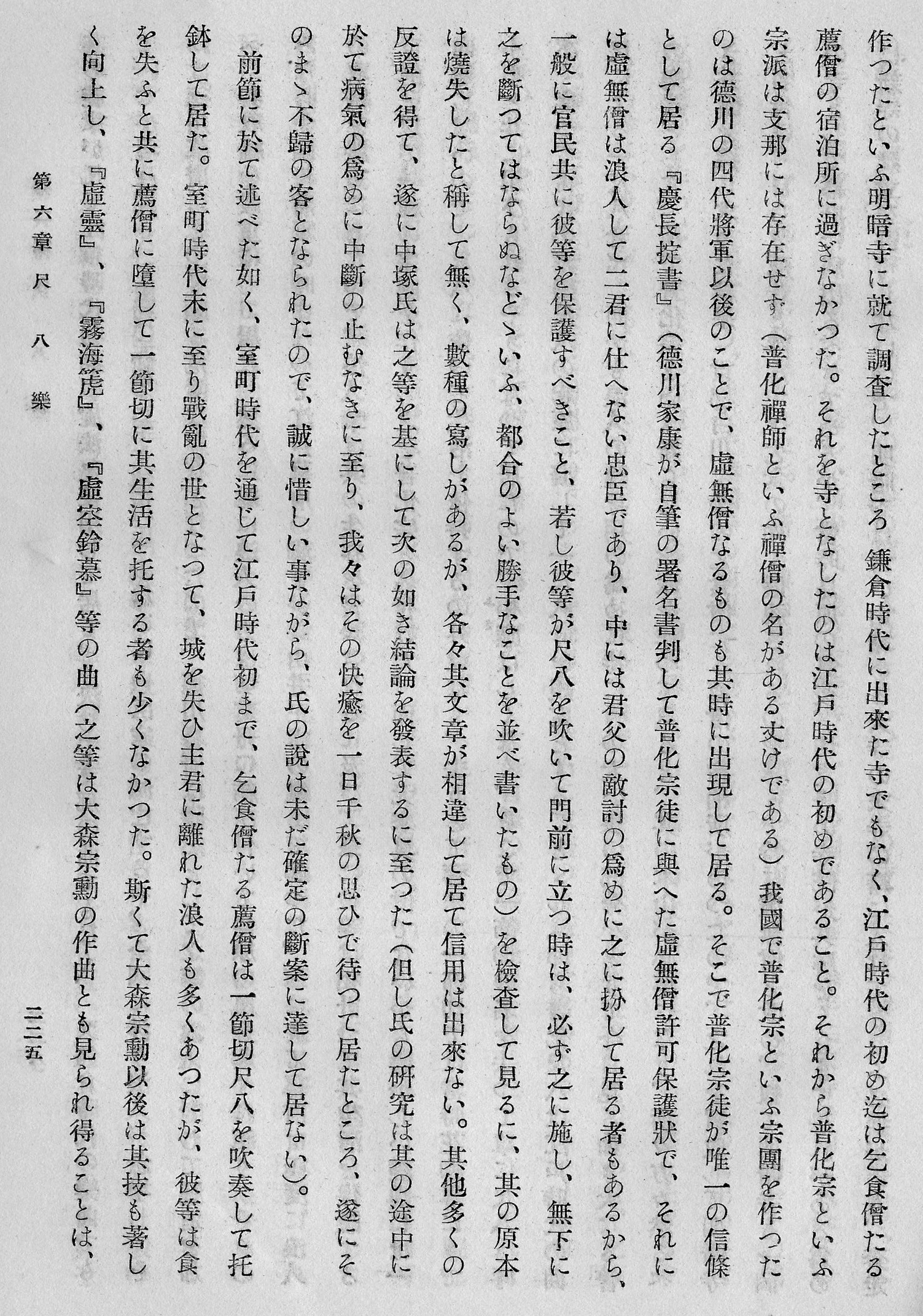
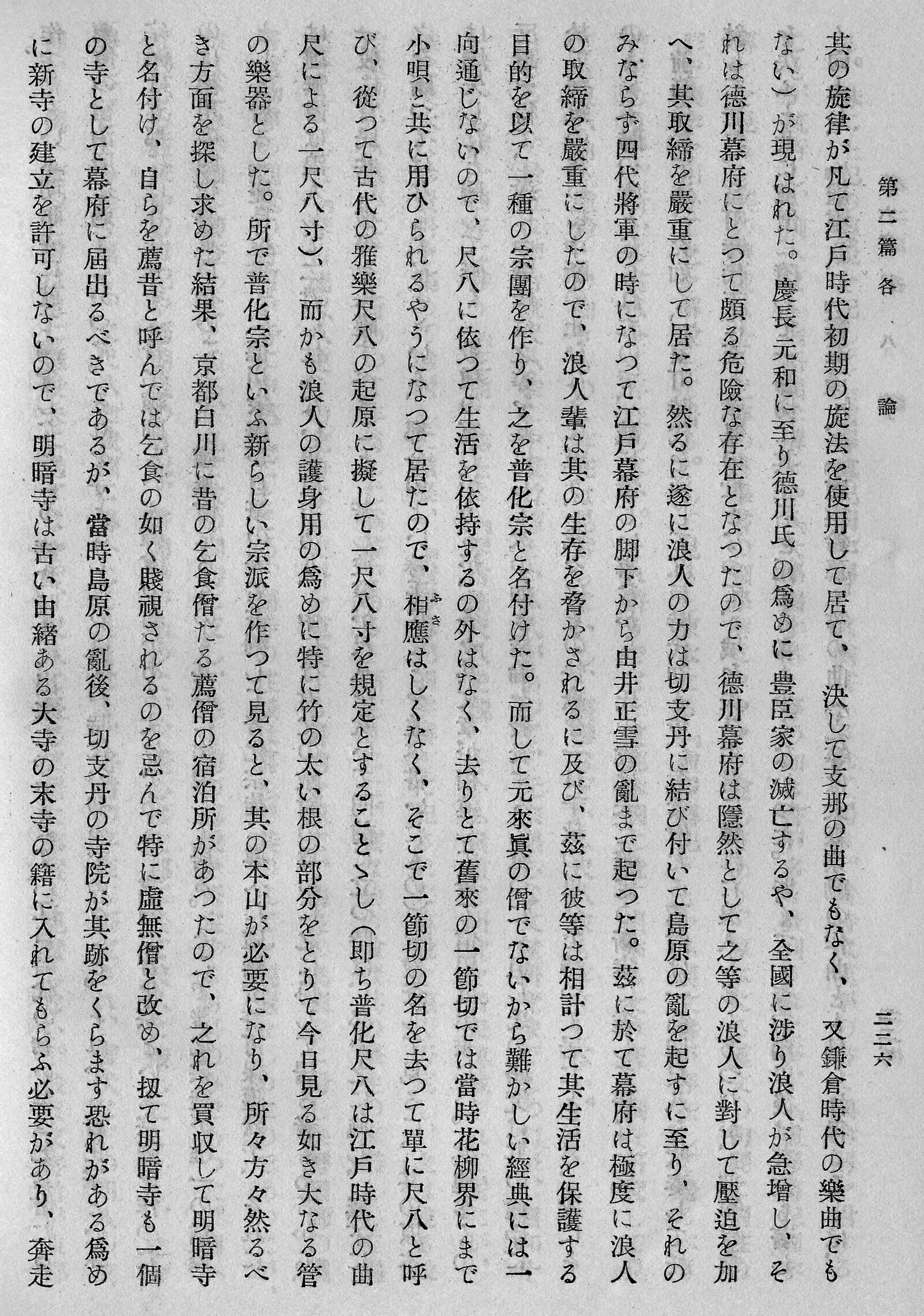
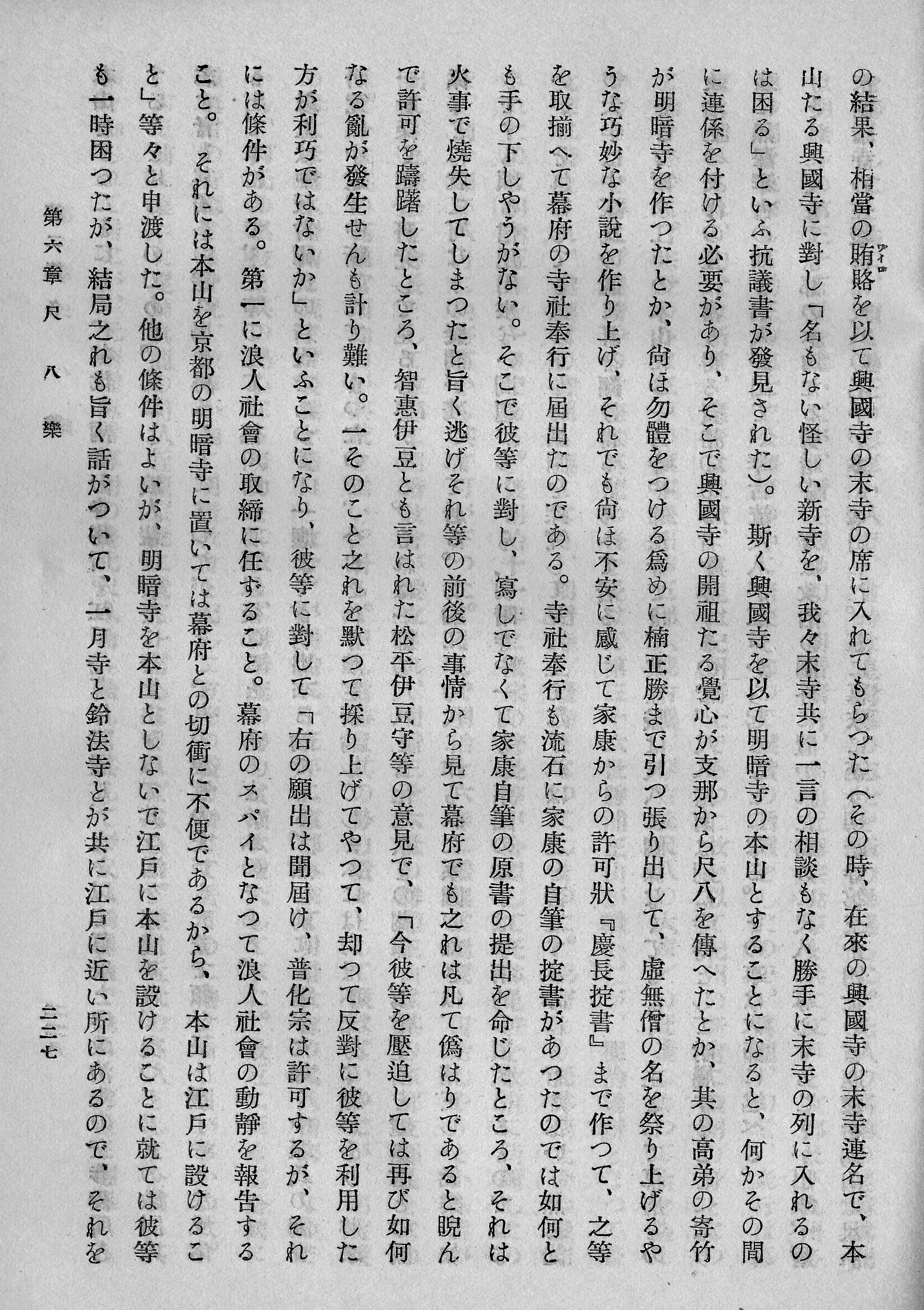
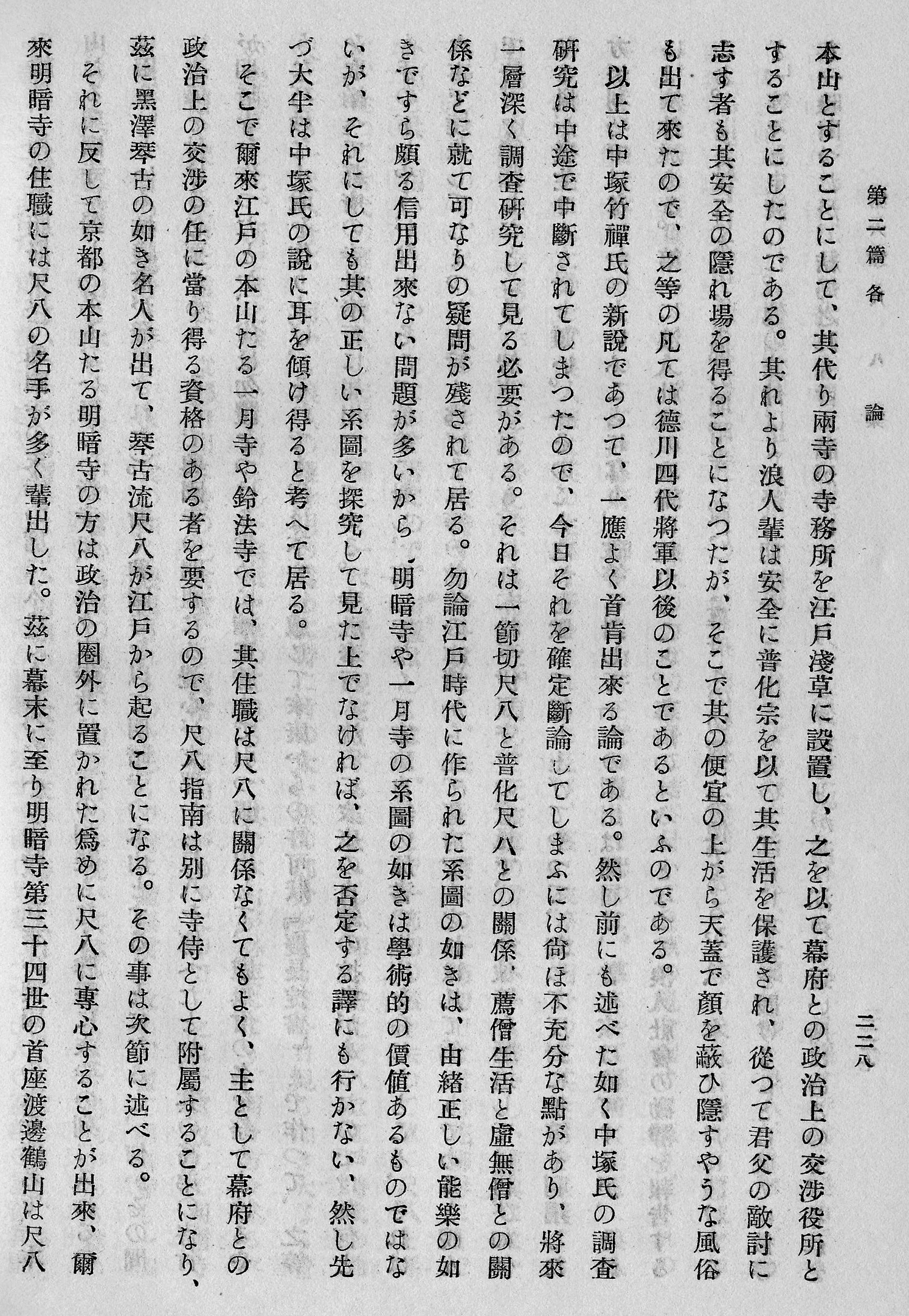
Tanabe Hisao, 1954, pages 224-228.
Well, at that time, Tanabe Hisao could only have known and referred to Nakatsuka Chikuzen's many articles that
were published from 1936 through 1939 in the important Japanese traditional music magazine titled Sankyoku,
三曲.
Tanabe Hisao did not specify precisely which of Nakatsuka's articles he was referring to, unfortunately.
Nakatsuka's monumental shakuhachi research contributions were first re-published in a 600+ pages volume in 1979, by Nihon Ongaku-sha.
Now, regarding Nakatsuka Chikuzen's 1936-1939 writings on Christianity in Japan and the origin of the Kyōto Myōan Temple,
the 1979 anthology contains at least two chapters of special interest, namely:
「切支丹宗門改」
'Kirishitan shūmon aratame' -
"The Inquisition ["Revision"] of Christianity" - Nakatsuka 1979, pp. 276-282:
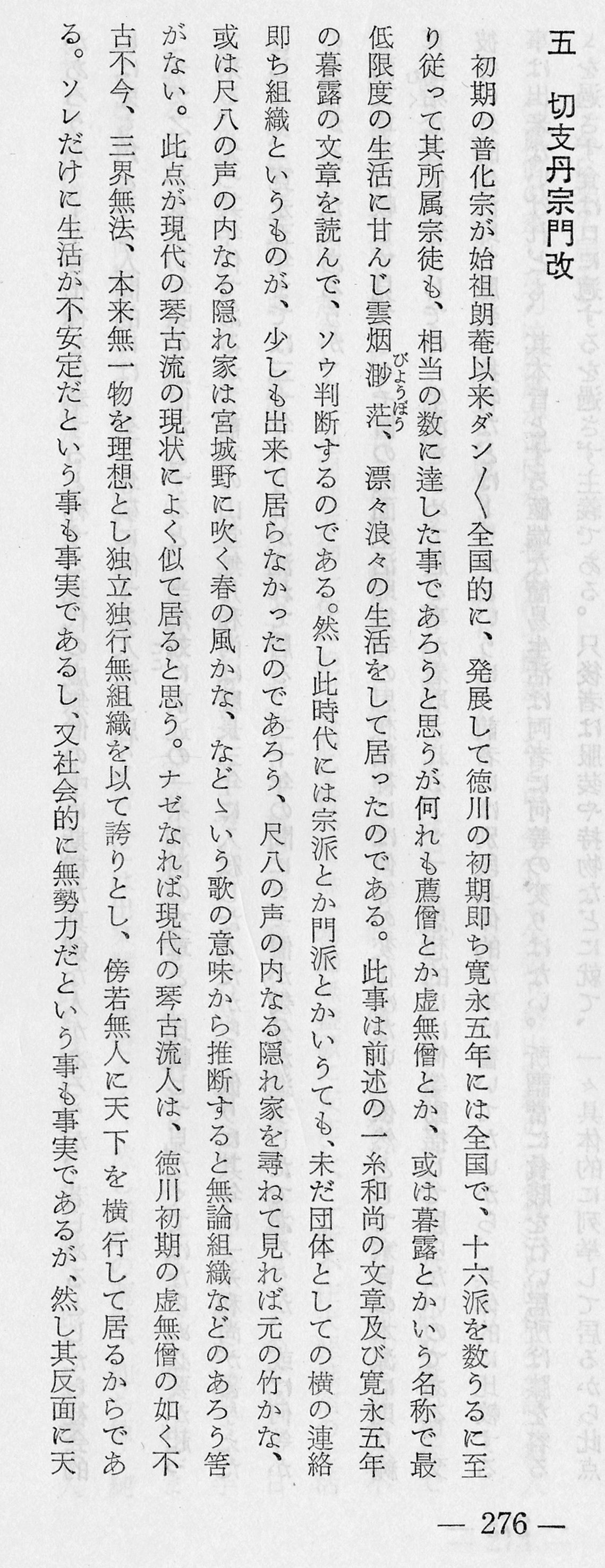
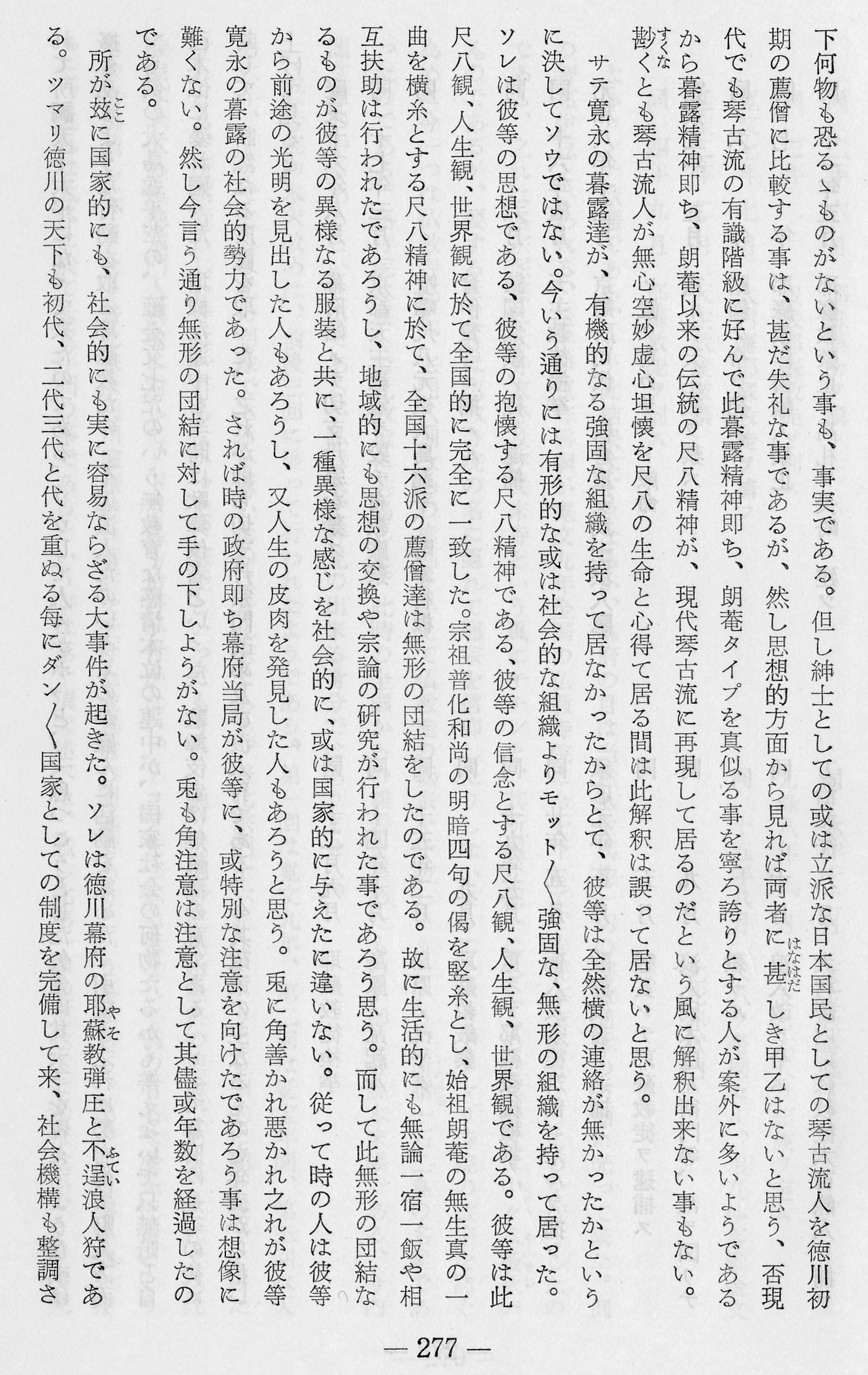
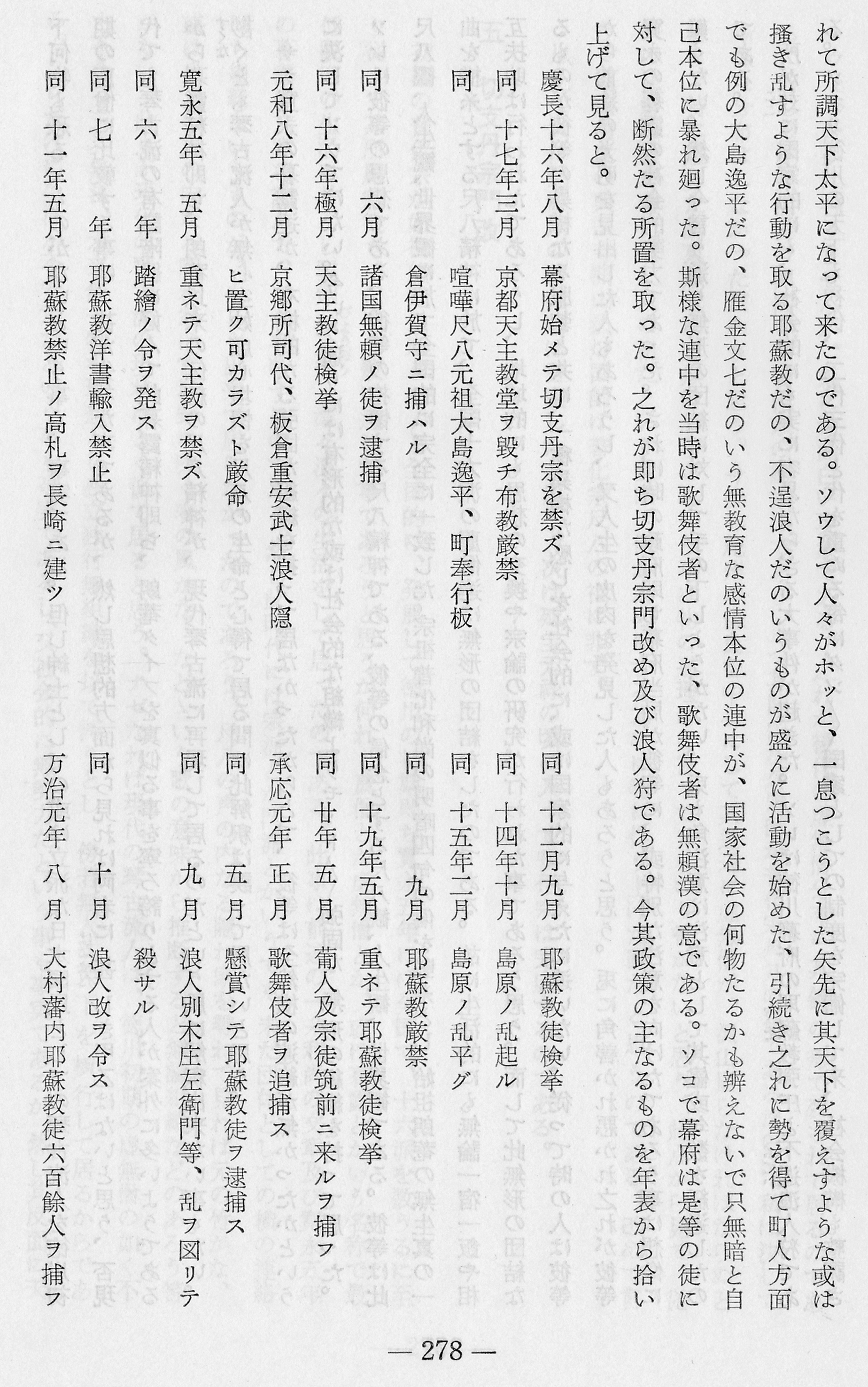
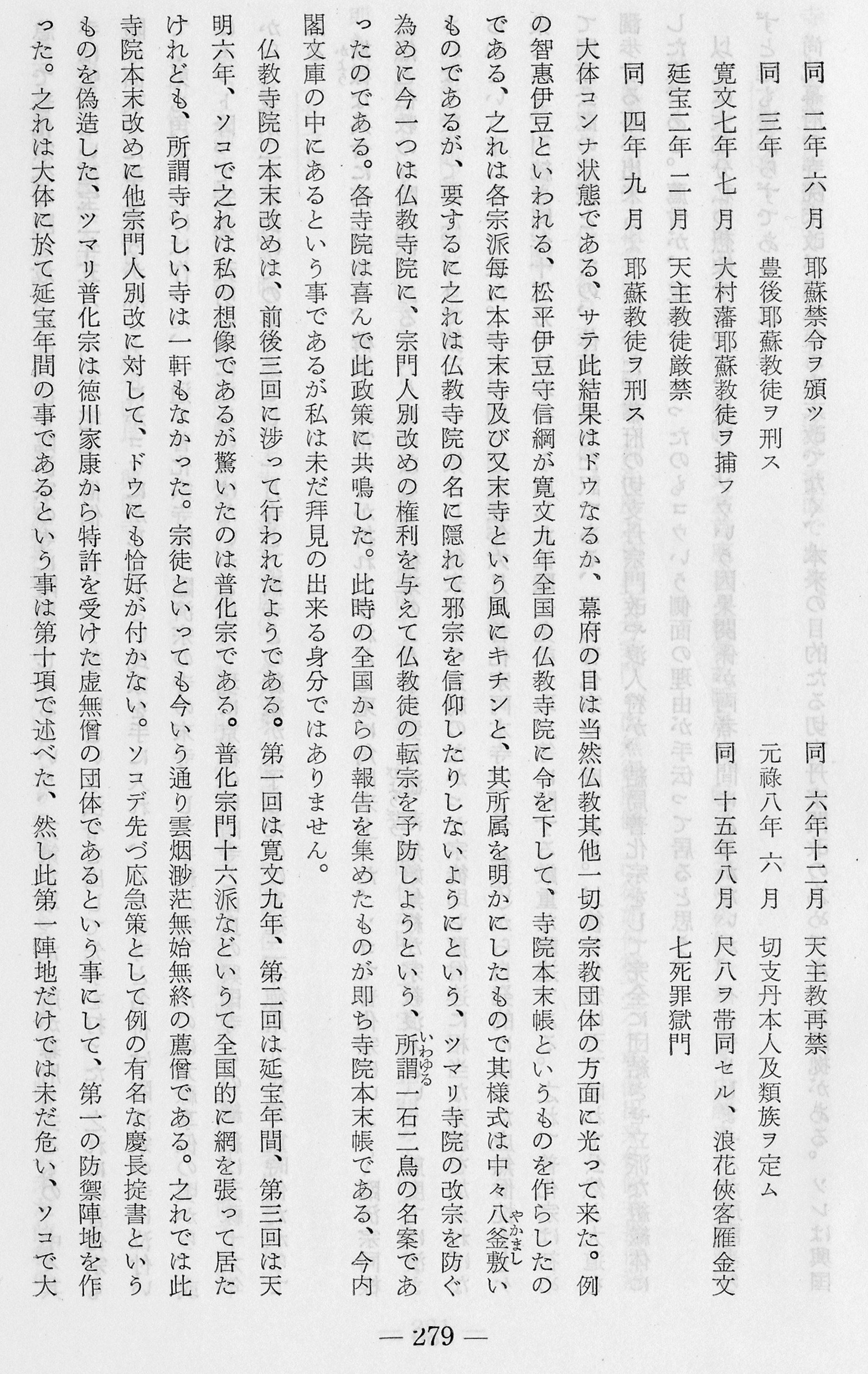
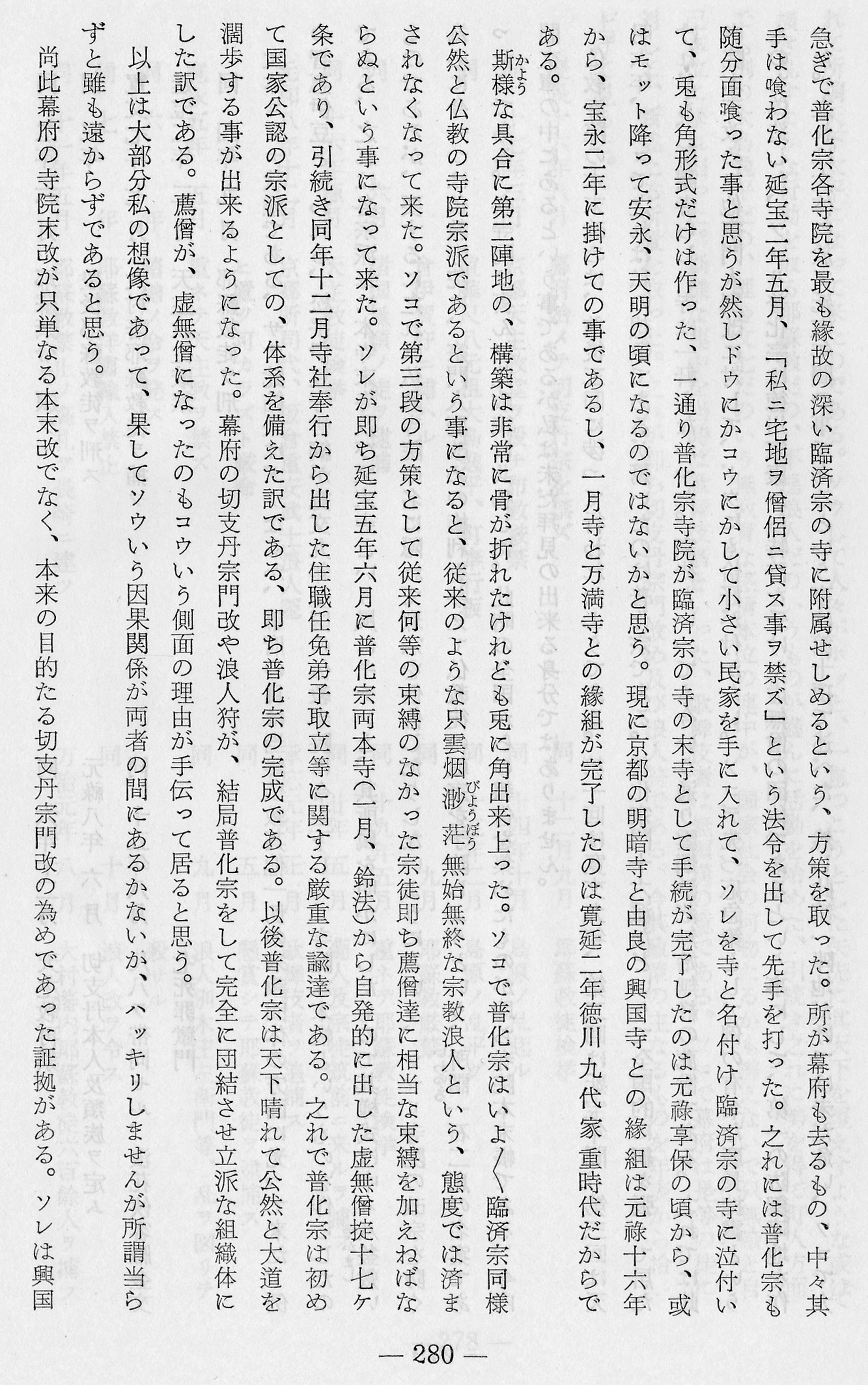

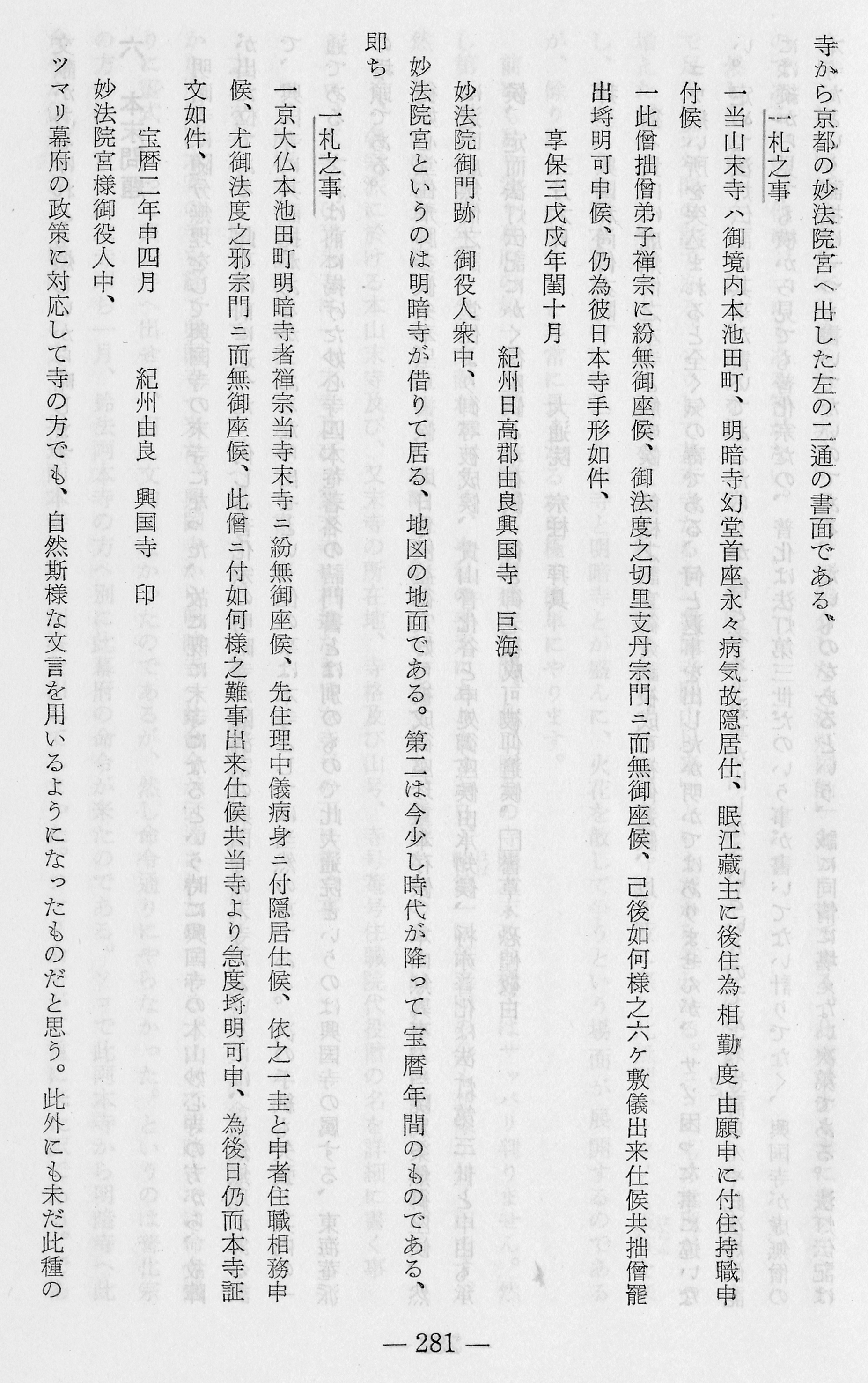
「明暗寺はイツ出来たか」
'Myōan-ji wa itsu dekita ka' -
"When did [Kyōto] Myōan-ji emerge?" - Nakatsuka 1979, pp. 250-254:
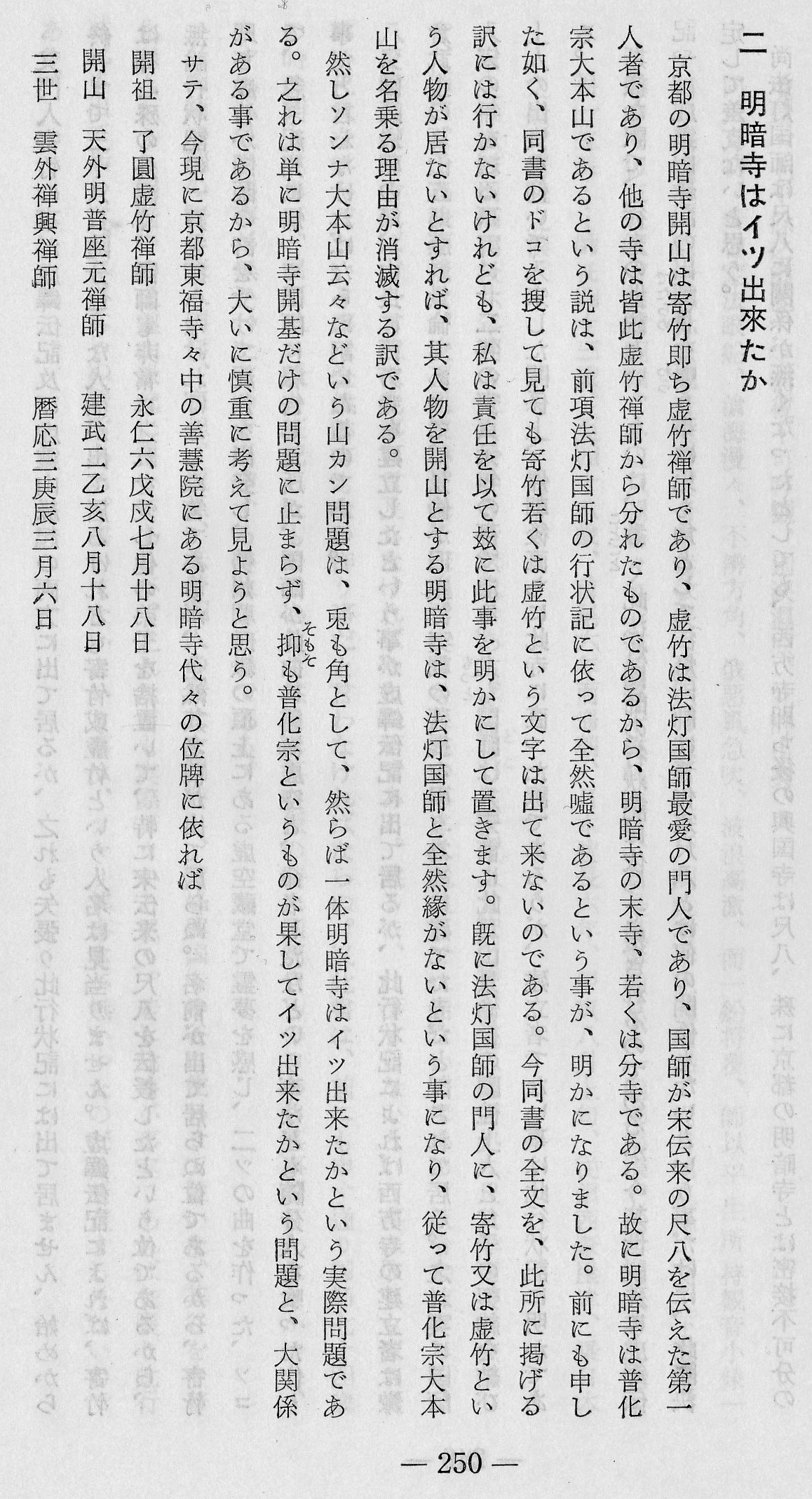
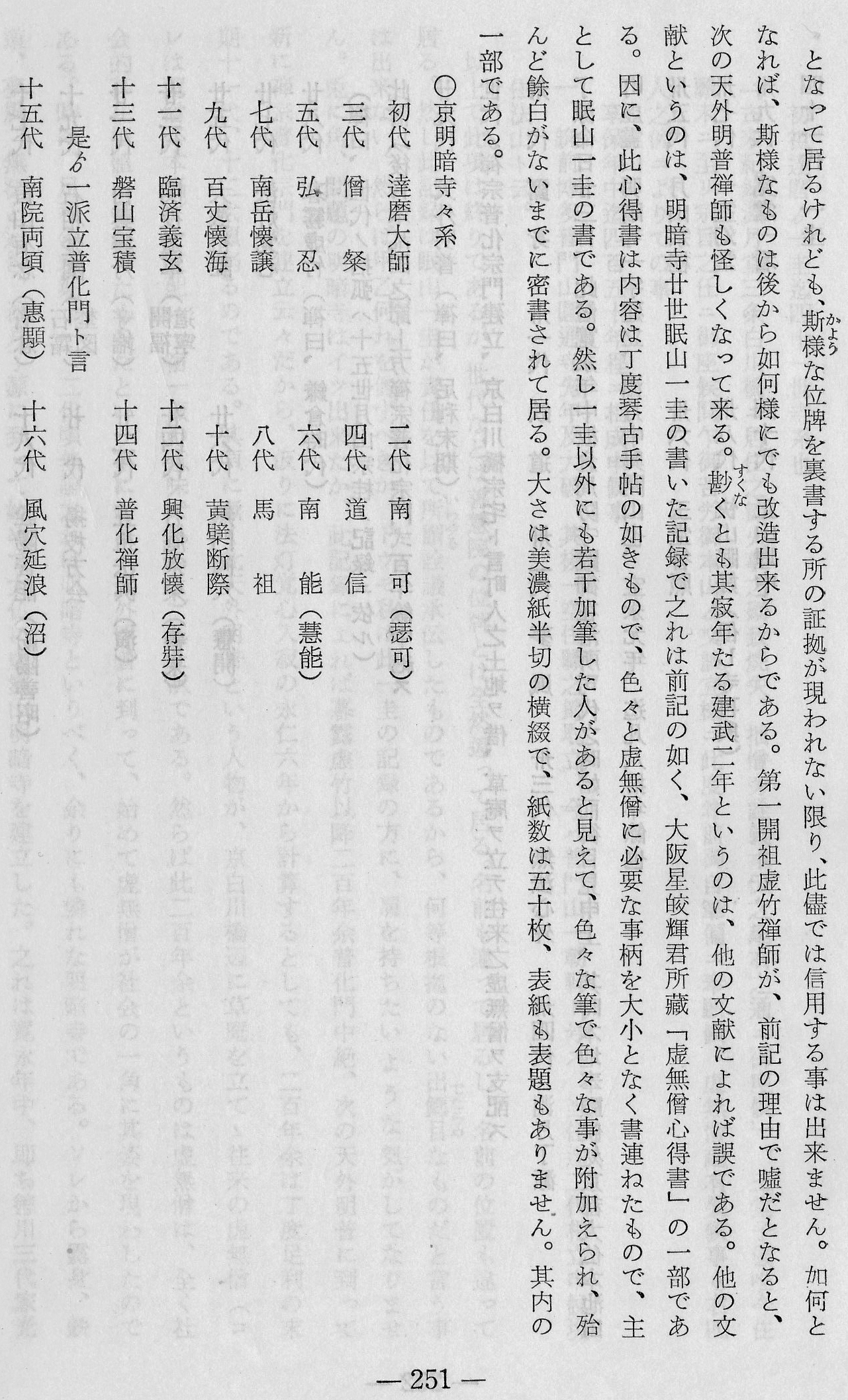
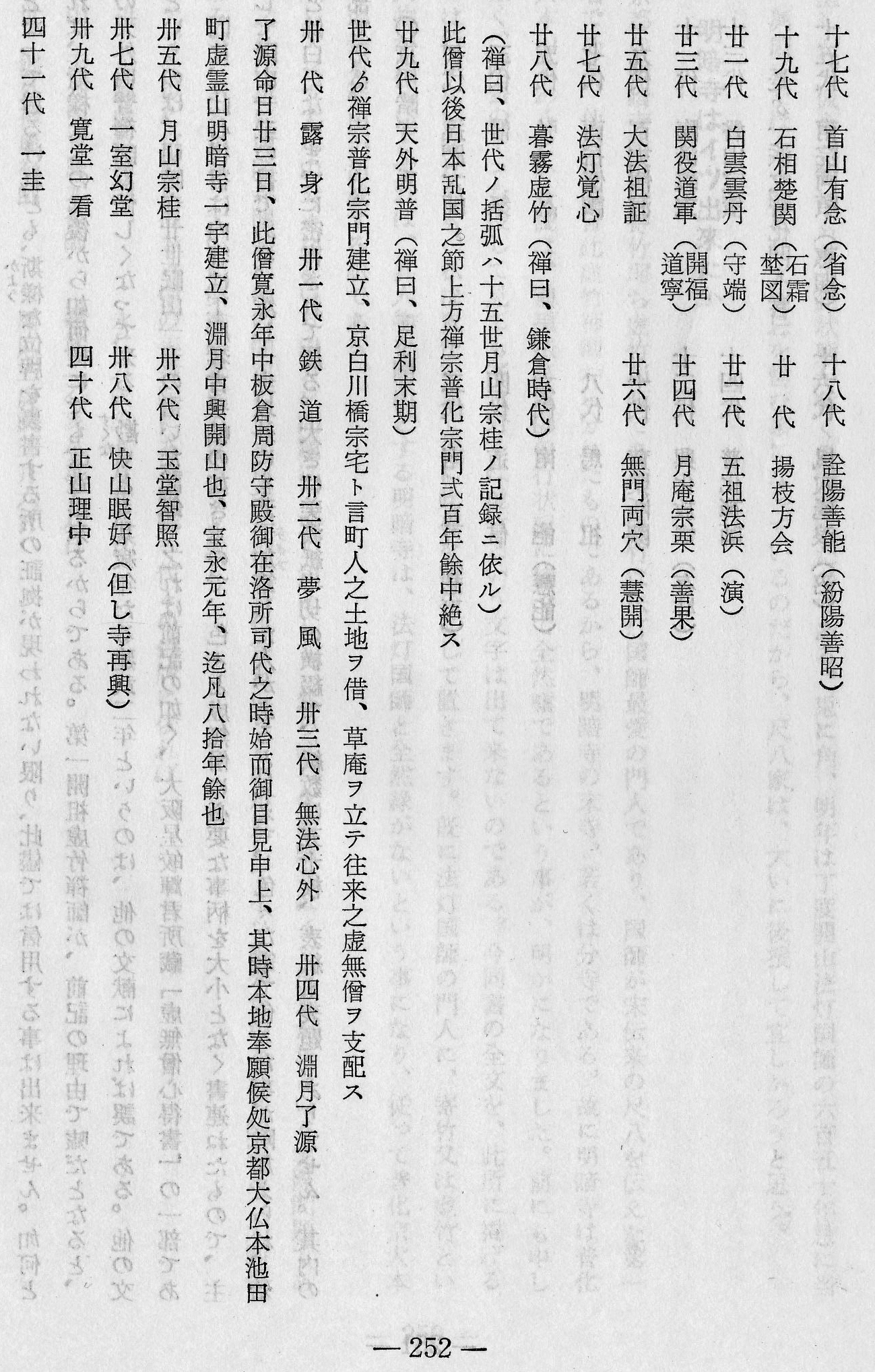
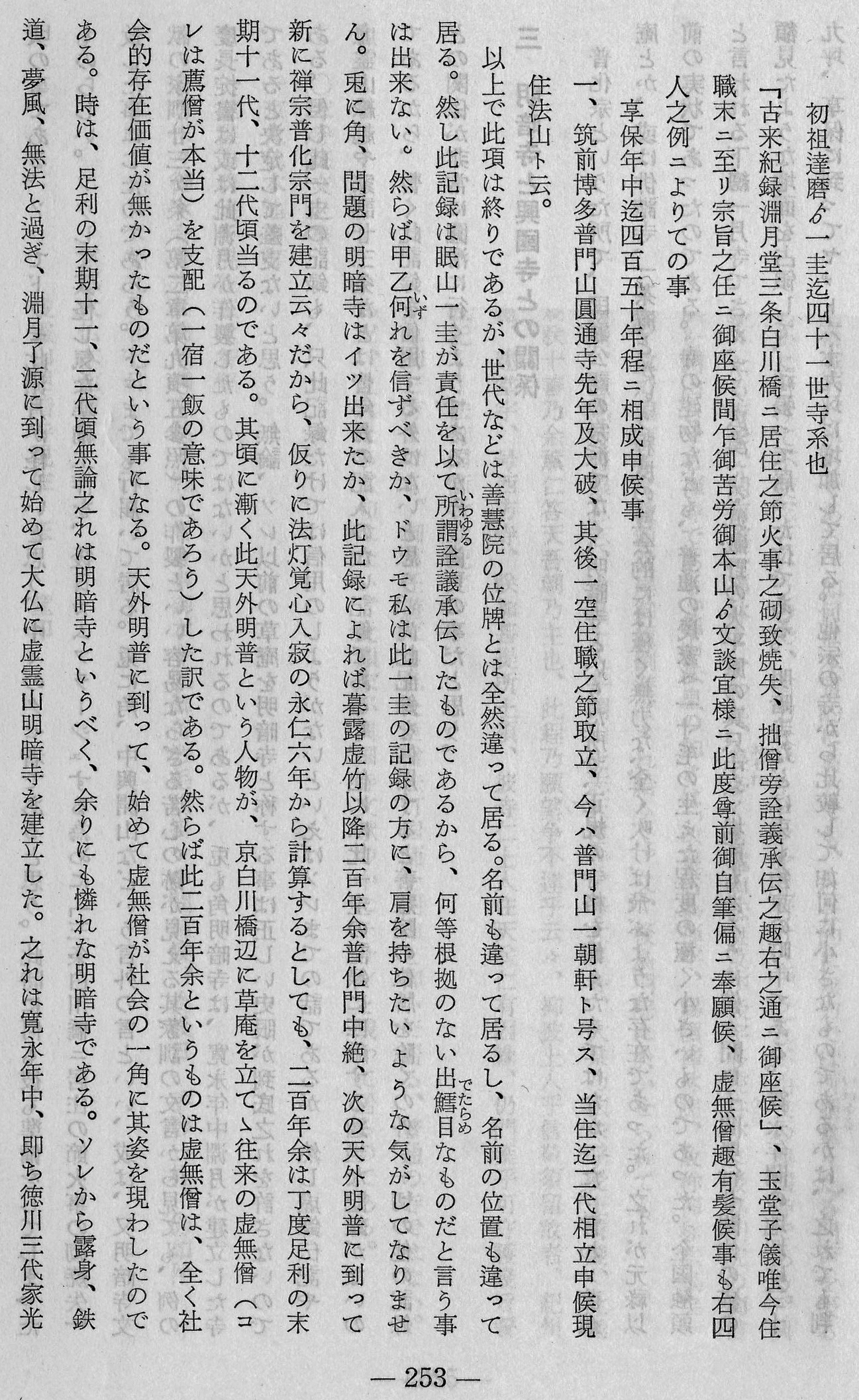
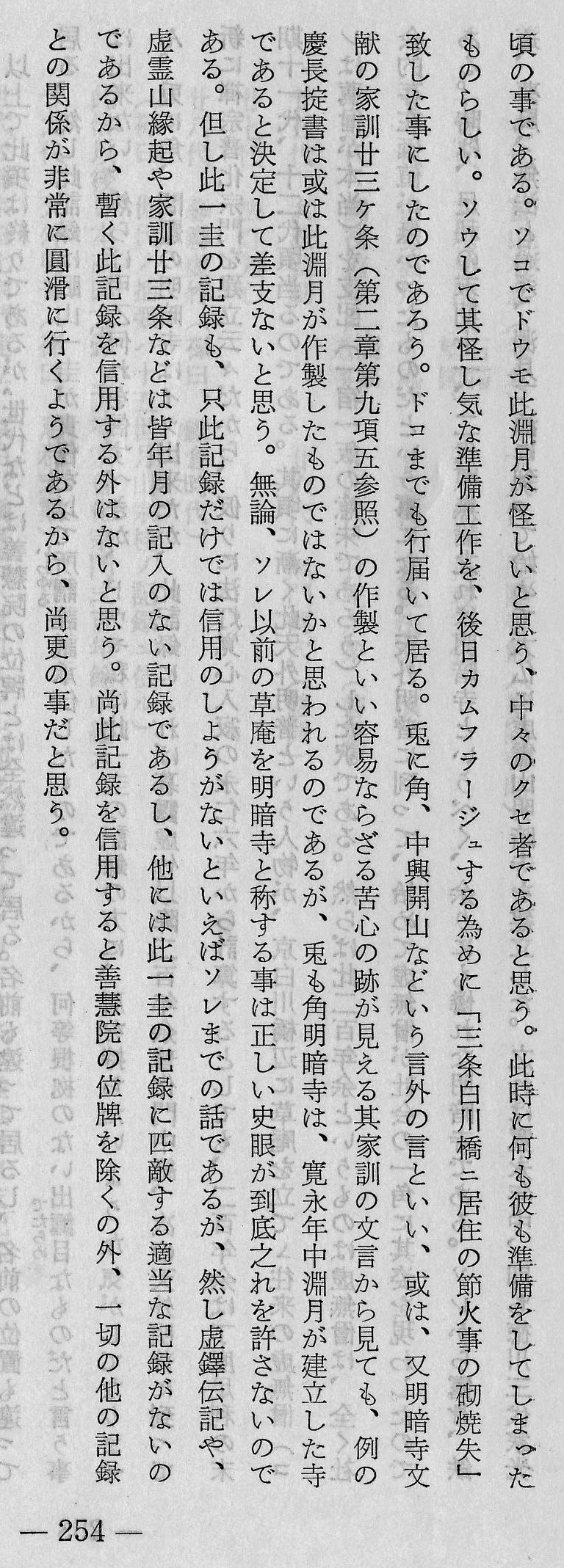
Scans of those two book sections are presented here for display, for anyone who may care to study the content of the matter,
dig further into the subject, with proper respect for Nakatsuka Chikuzen's pioneer WW1 to WW2 interbellum
Sankyoku magazine research articles, published from 1936 through 1939.
Now, what is this matter actually very much about?
Well, in 2024, towards the very end of the month of January, a veritable "shitstorm" broke out
in the quite popular Facebook group titled "Shakuhachi BBQ". Why?
Here are the two prime causes why that "event" went completely out of control and lost all common decency in that "Shakuhachi BBQ" Facebook group:
The Shogunate Youtube channel: "Mystery of the Komuso" by Shawn Head and Nick Bellando, dated August 27, 2023.
240.994 views as of March 21, 2025, at 12:00 noon Danish time, Scandinavia, N. Europe.
That particular "shitstorm" that featured very heavy accusations and personal insults was caused, read: ignited,
by this blog article authored by Hanzaburō Araki a.k.a. Araki Kodō VI:
Hanz Araki, 2024, January 27: "Argumentum ad Ignorantiam" ("Argument to Ignorance")
It can be added that the late January, 2024, thread was removed from the BBQ message board shortly after the event had occurred.
CONCLUDING EVALUATION of the RELEVANT PROBABILITIES:
So, when could a Kyōto Myōan Temple have been founded - by early 'Komusō'? - after the persecution of Catholic converts
was institutionalized and effected nationwide in Japan, in 1640?
This seems to be the oldest existing picture of 'Komusō' in a Kyōto street, here begging for food, dated 1659:
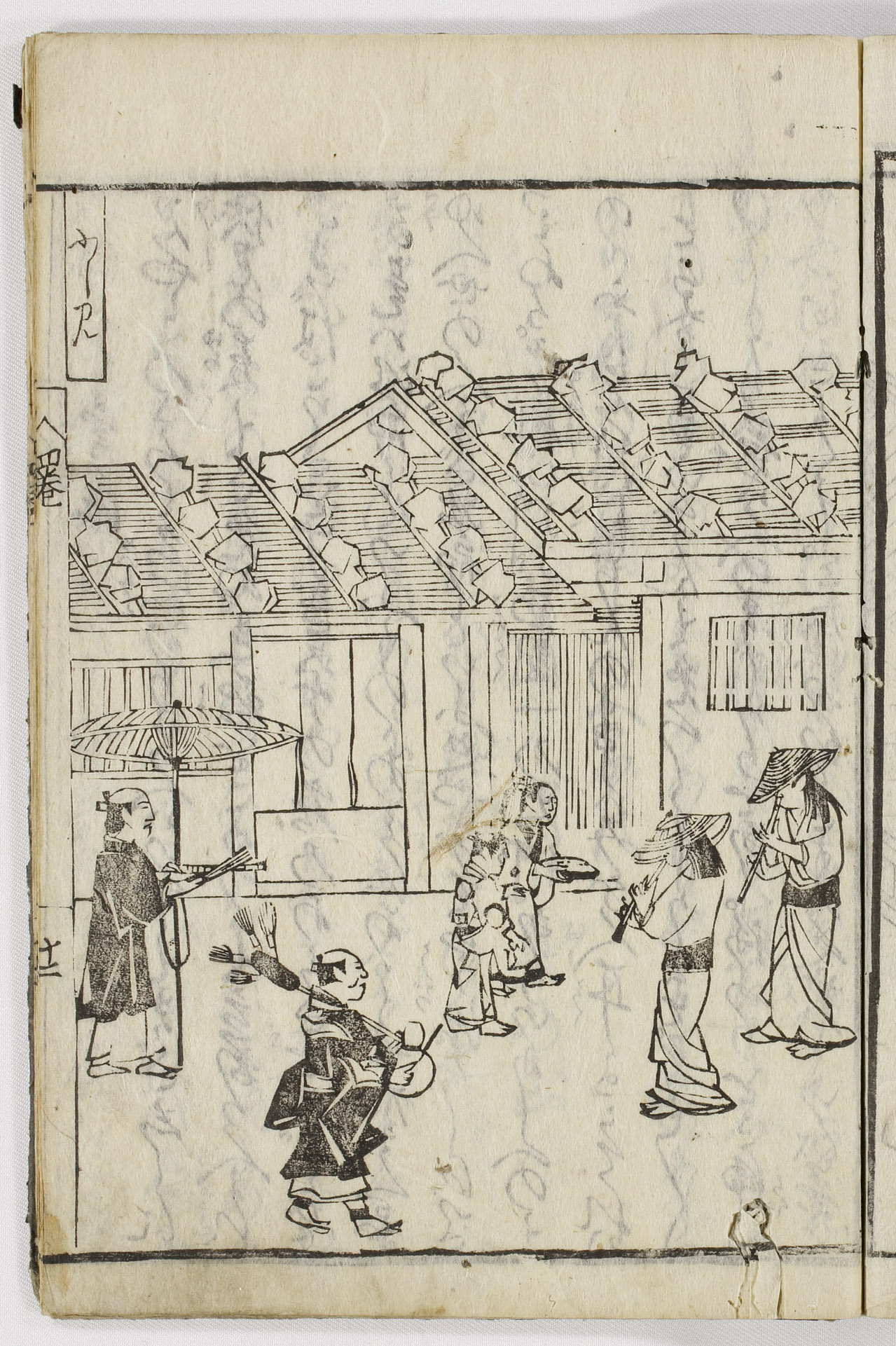
Two wandering vertical flute players in a Kyōto street
Possible very early Edo Period 'Komusō' -
"Lay Monks of the Non-Dual & None-ness"?
In: the 'Kyō warabe' by Nakagawa Kiun
The Remembering the Capital Archive, Kyōto
Source URL:
Frame 13 in Volume 4 of the 'Kyō warabe'.
Source: The Remembering the Capital Archive, Kyōto.
Next, there is one rare, rather suspicious looking Myōan-ji document, at first sight dated 1659, but much more likely fabricated in the year 1752,
at a time when, quite possibly, the temple was facing some challenges to "prove" ancestry back to the mid-1600s, at least?
1659?/1752: A Falsely Dated Myōan-ji Document Revealed?
In the present Kyōto Myōan Temple online accesible ancestor annals, temple "restorer" 'Chukō' Engetsu Ryōgen Zagen's exact death day is given as
Genroku 8 (1695), Month 5, Day 23.
The death of his (alleged) immediate predecessor, Ushin Hōkei, is given (also precisely) as
Kan'ei 10 (1633), Month 10, Day 5.
Link: Myōan Temple Genealogy
Do observe that the equivalent dates are not the same at all in our Western calendar table for the period in question!
The oldest known actual written account of 'Komusō' in Kyōto is this one, by Nakamura Sōsan, dated 1664:
"The 'komusō' shakuhachi is named 'shakuhachi' because its length has been cut to the measure of 1 foot and 8 inches.
Its origin is certainly unknown.
Although it is being said that Hottō of Yura [Shinchi Kakushin] was the founder [of the 'komusō'], that I do not ascertain.
One hears that, since ancient times, this thing [the 'shakuhachi'] was used by the 'boroboro' practitioners, and also that the socalled 'bonji', 'kanji', 'iro-oshi',
and 'shira-bonji' were people who performed this 'shakuhachi' ceremoniously.
There are nowadays some outcasts [Jap.: 'fu-nin', "non-persons"] who are called 'komusō';
they are blowing a piece of music named 'Goro' - besides there are other tunes such as 'Renbo Nagashi', 'Miyako Renbo',
'Samunaru Ikawa', and 'Yoshida'.
One does not hear any of these pieces being played in the 'ritsu' [Dorian] or the 'ryō' [Mixolydian] musical modes.
As this, however, is not the tradition of my own, I do not know about this matter in depth."
However, no mention of any Kyōto "temple" here!
妙暗寺
Now, finally, we have a Kyōto document, dating from around 1684-1686, that gives the actual name
of a Myōan Temple in SE Kyōto;
"Myōan-ji is located south of the Renge-ō-in, "Hall of the Lotus King" [the Sanjūsangen-dō], and it is a Zen temple."
踏み絵
Already since 1629, noteworthily, annual nationwide 'fumi-e' picture trampling ceremonies were rolled out
which the cunning intention to reveal any secret Christian convert who could not set foot on a small picture plate
showing the Virgin Mary or the Jesus Christ suffering on the cross.
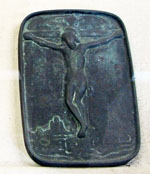
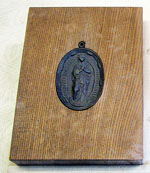
Fumi-e: Jesus Christ & the Virgin Mary
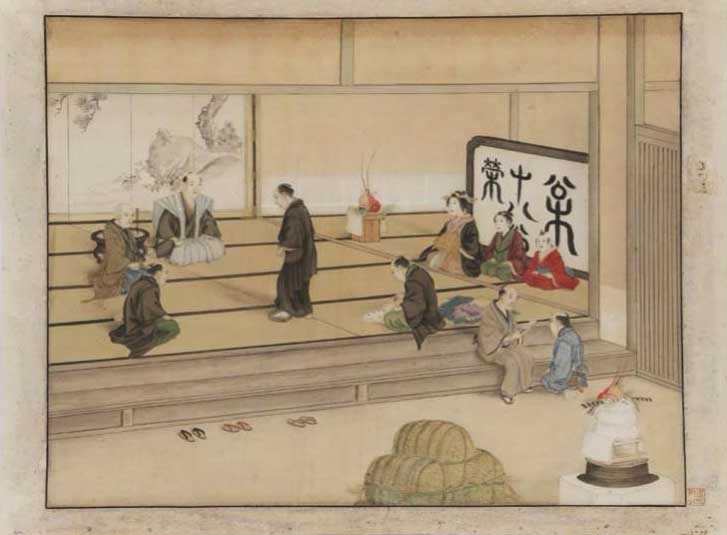
Painting of a 'fumi-e' inquisitional ceremony by Keiga Kawahara, 1786–1860?, a citizen of Nagasaki,
created sometime during 1800 to 1829.
Source: National Library of the Netherlands. Link:
geheugenvannederland.nl
Early 17th century 'Rōnin' and 'Rōnin-Komosō' as well as soon also 'Rōnin-Komusō', were certainly subjected to that same challenge,
so very few of them, if any at all, would have been left alive around the 1650s-1660s, at the latest, one should rather take into consideration.
Likewise, the annual national inspections, head counts, census operations, performed by monks of all the established Buddhist sects under the 'Danka' temple patronage 'Seido' system,
would have circled in on and exposed any "Christian Komusō" hiding out in any household, in every valley and village in Japan, in these troubled times.
Whatever Nakamura Chikuzen and Tanabe Hisao may have known about actual, concrete documentary evidence,
no such appears to be mentioned directly in the above shown writings by the two highly respected 20th musicologists/shakuhachi historians.
One first "shitstorm" over this matter broke out in late January, 2024, in the Facebook group "Shakuhachi BBQ" -
a new one quite similar in mid-March, 2025, in the European Shakuhachi Society/ESS' Facebook group.
Not a single person among those who spoke out negatively and with outspoken personal insults cared to research the matter thoroughly,
diligently, and with patience, before the much too well known
"Shoot First", "Kill the Messenger", "Play the Man, Not the Ball" set the tone in deeply deplorable disharmony, became the reality ...
Do note, interestingly so, that those two long, quite heated word exchanges have both been removed from the respective online Facebook platforms;
however, those long texts have been copied and preserved safely for the records, and for the future.
Here again, lastly, just for your recollection, here's a direct link to Shawn Head and Nick Bellando's Youtube video that stirred up, keeps stirring up, so vehement uproar
in certain sub cults of the Western New Age Shakuhachi World:
https://www.youtube.com/watch?v=yUfsTqWfqm0&ab_channel=TheShogunate
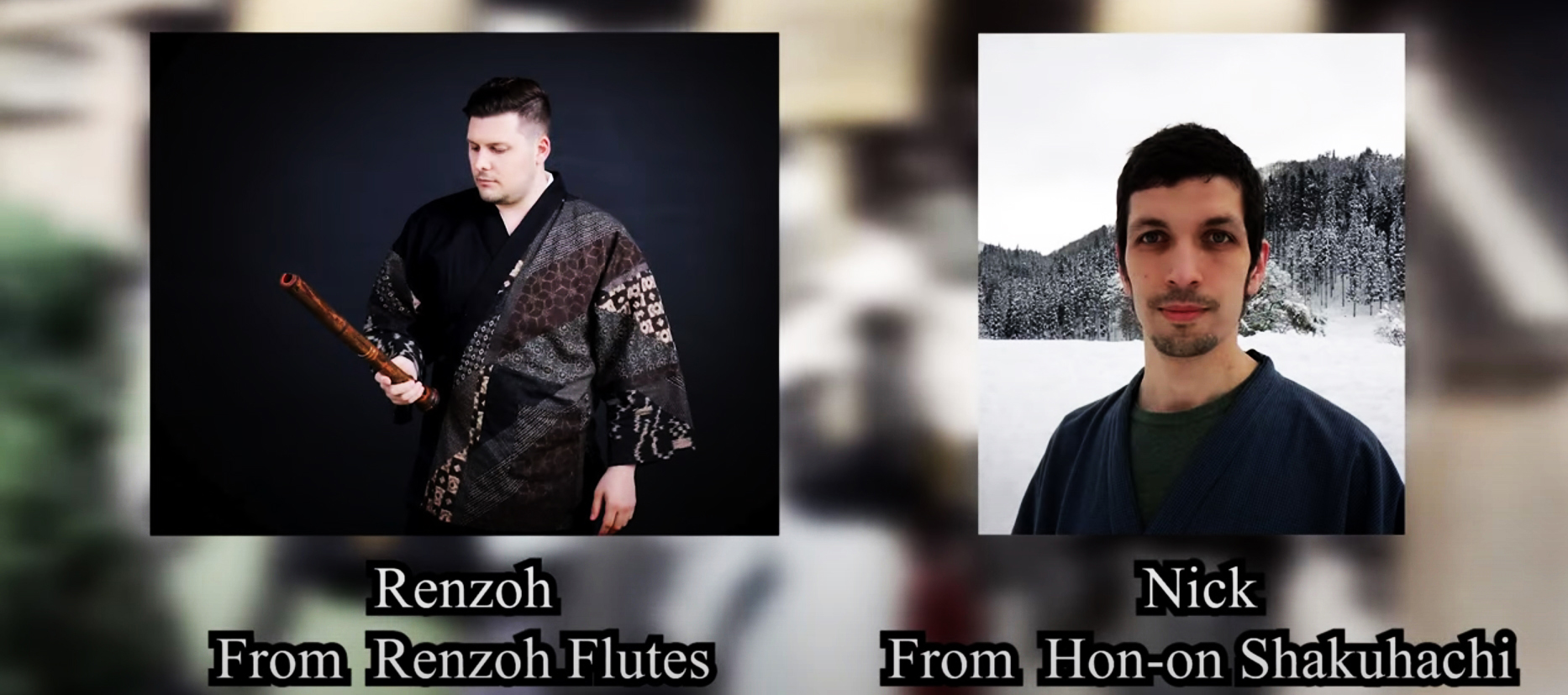
Shawn Renzoh Head/Renzoh Flutes & Nick Bellando/Hon-on Shakuhachi
All the Best
Torsten 'Mukuteki' Olafsson
Denmark, Scandinavia, N. Europe
Date: March 27, 2025
|
|
